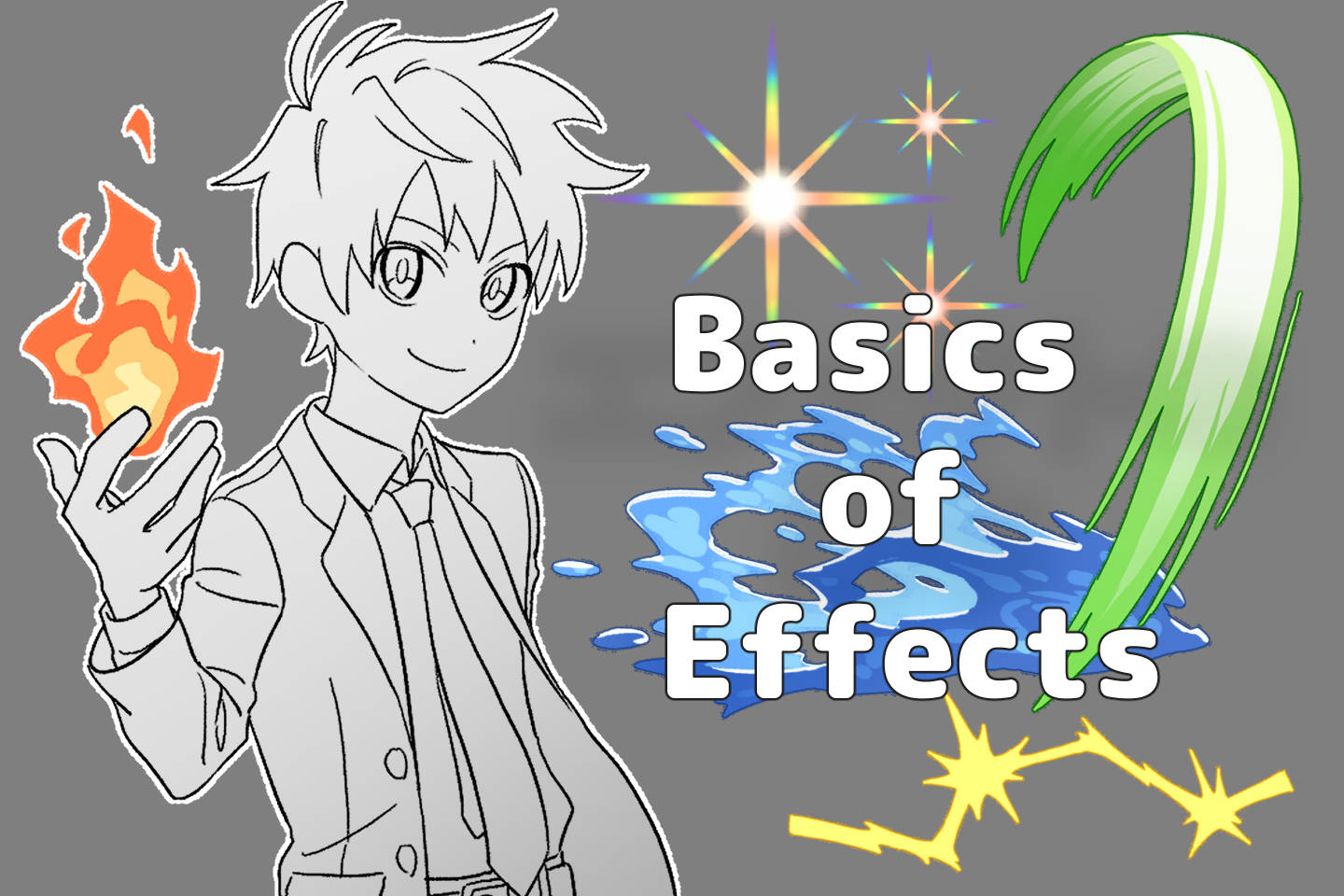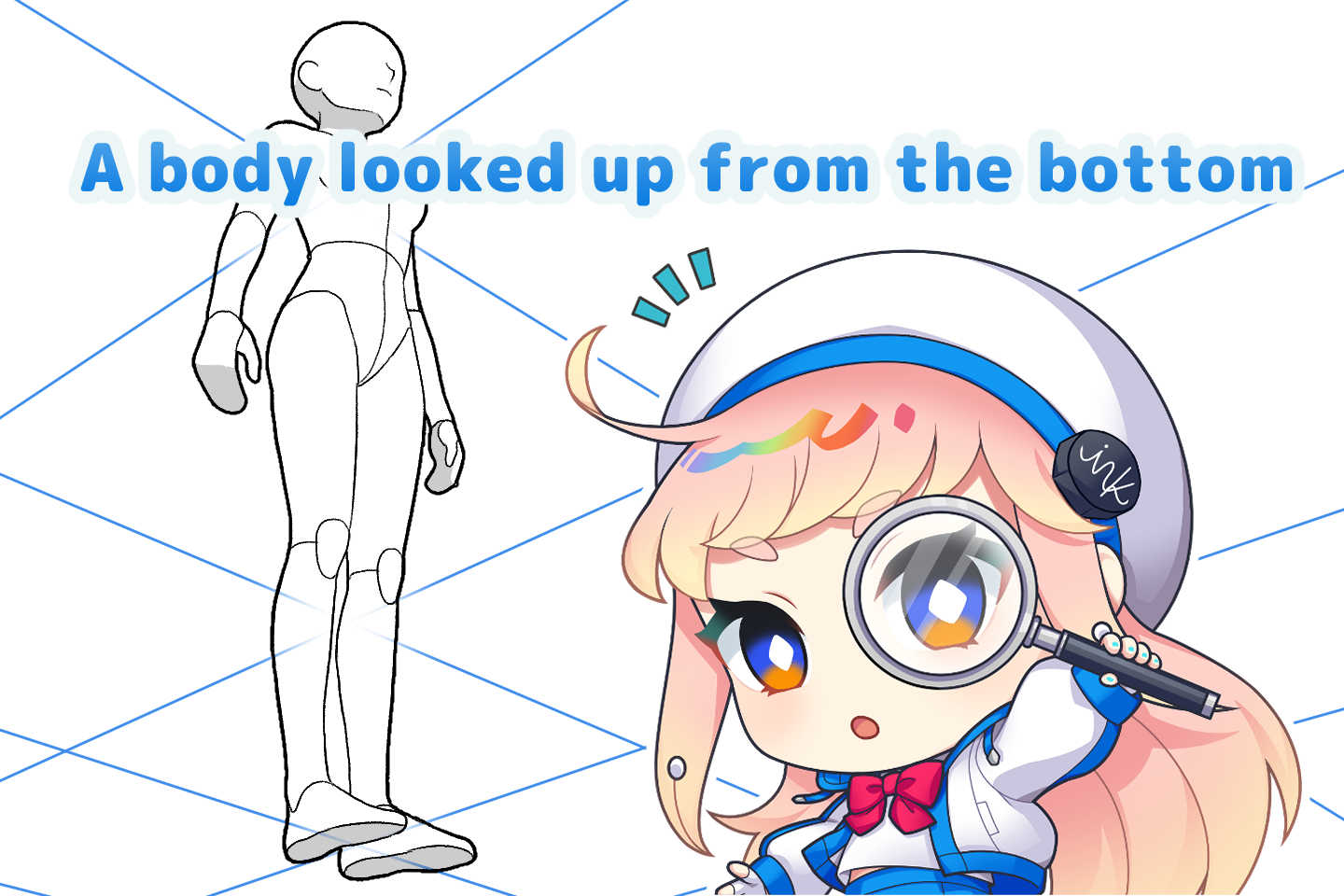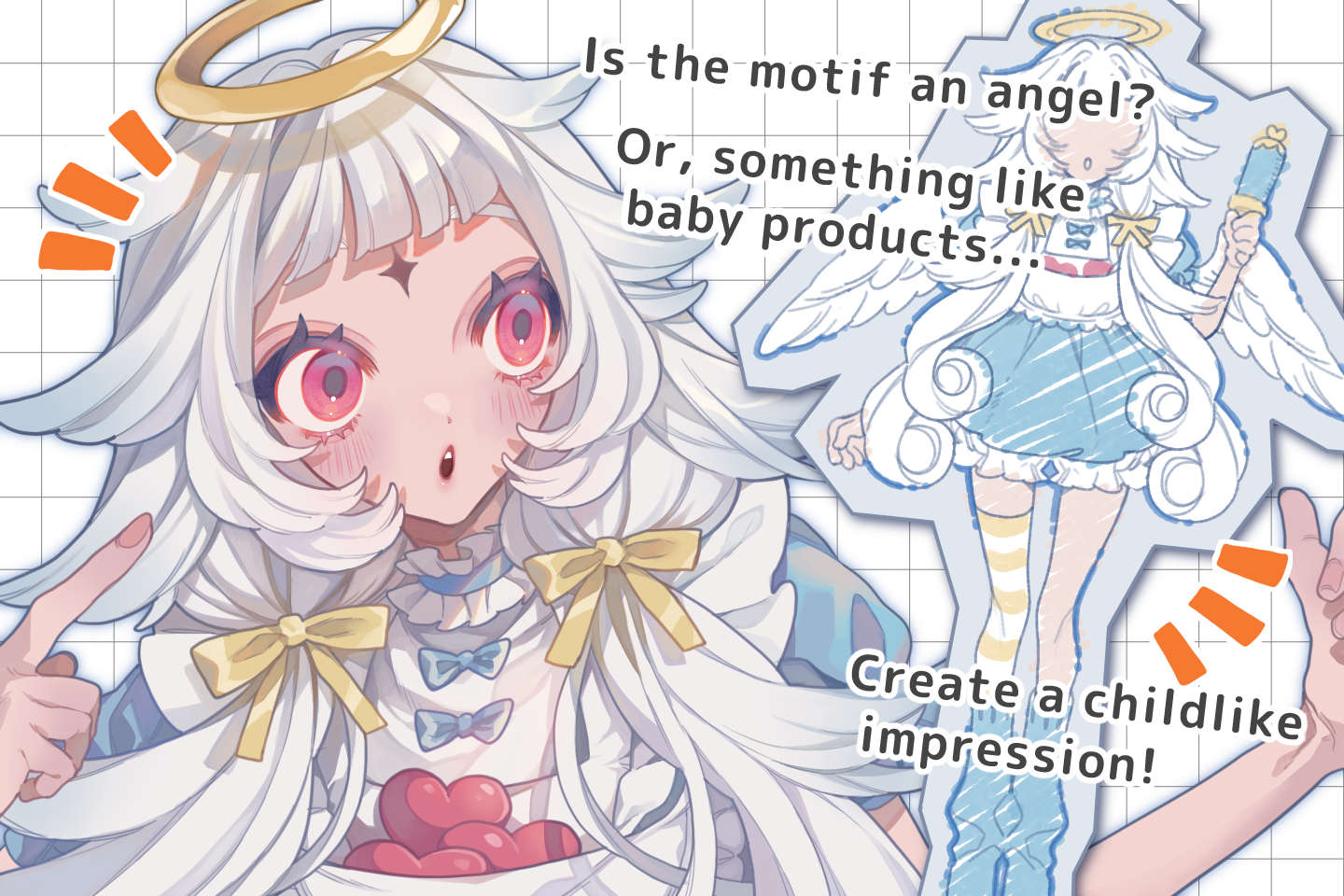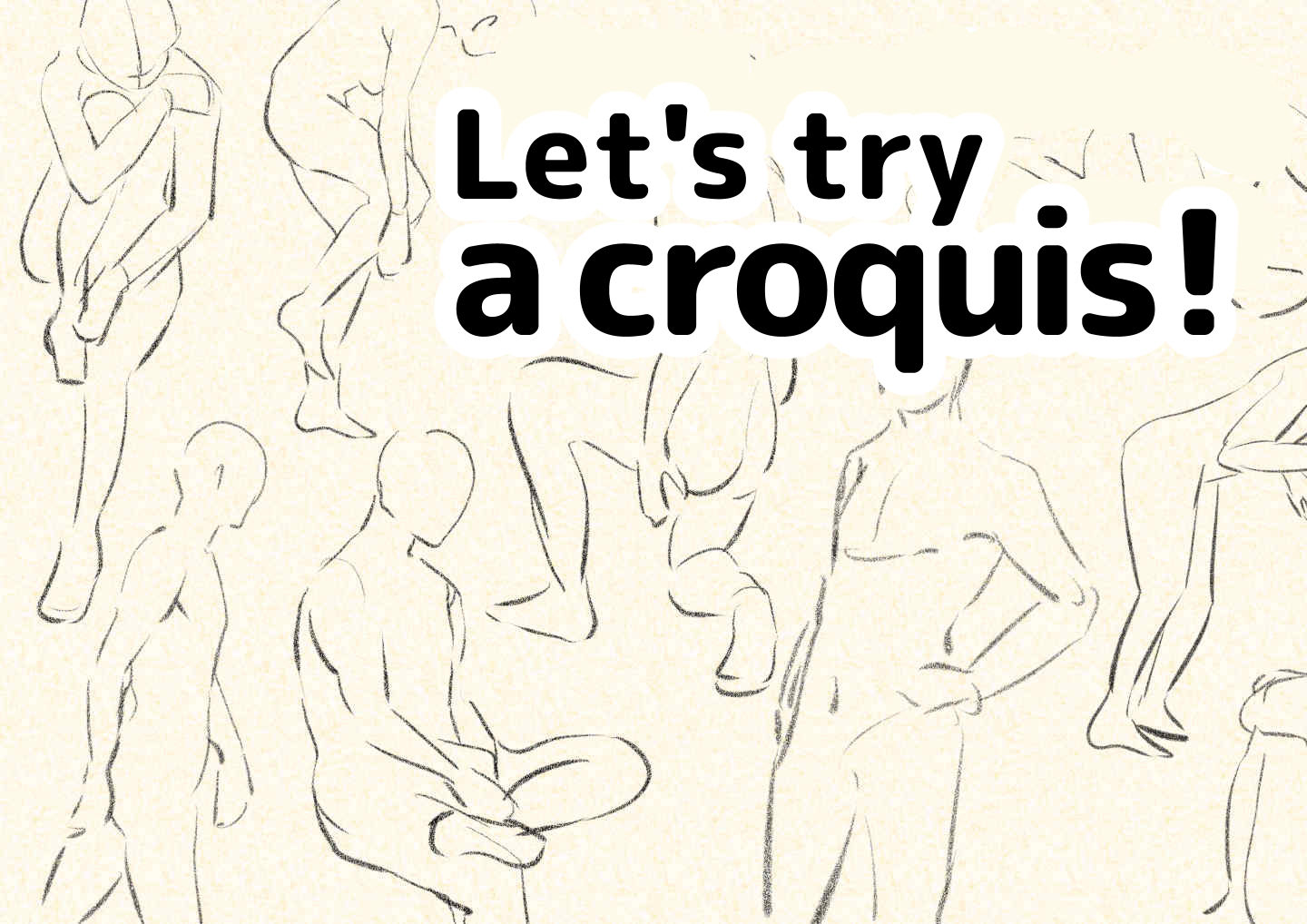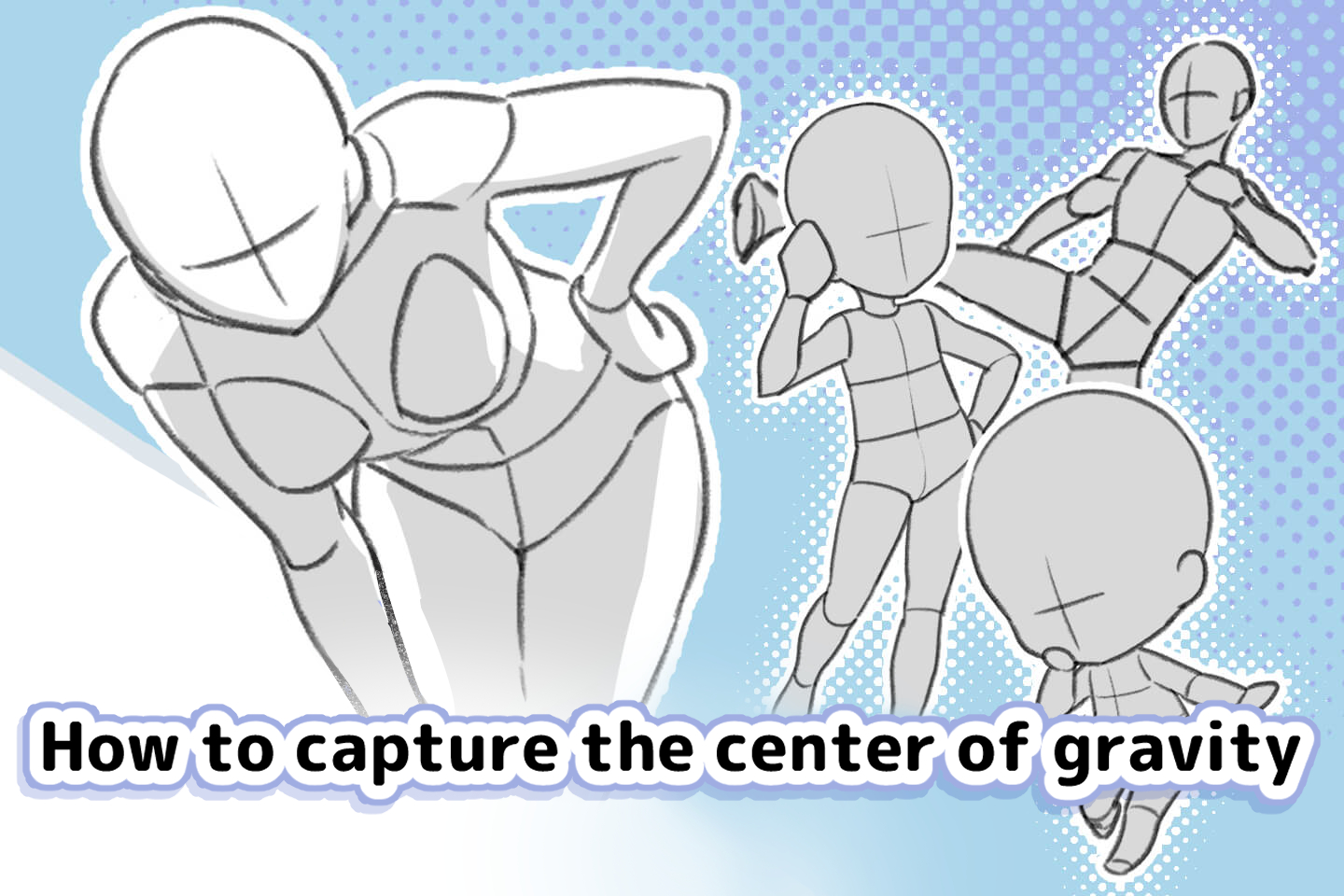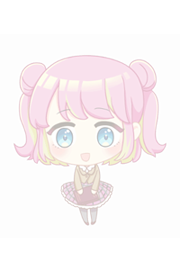
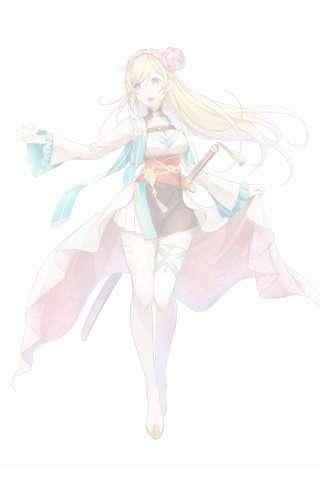
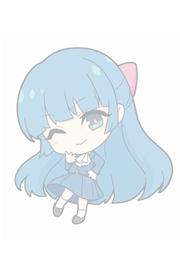
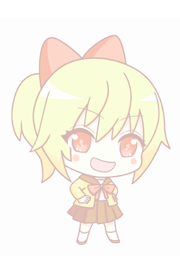
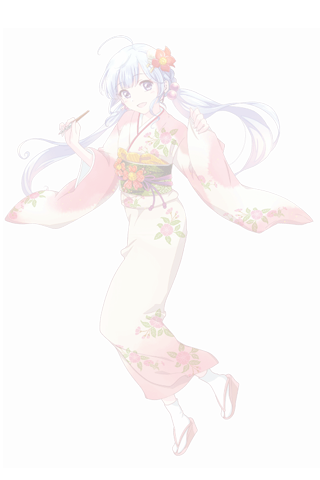







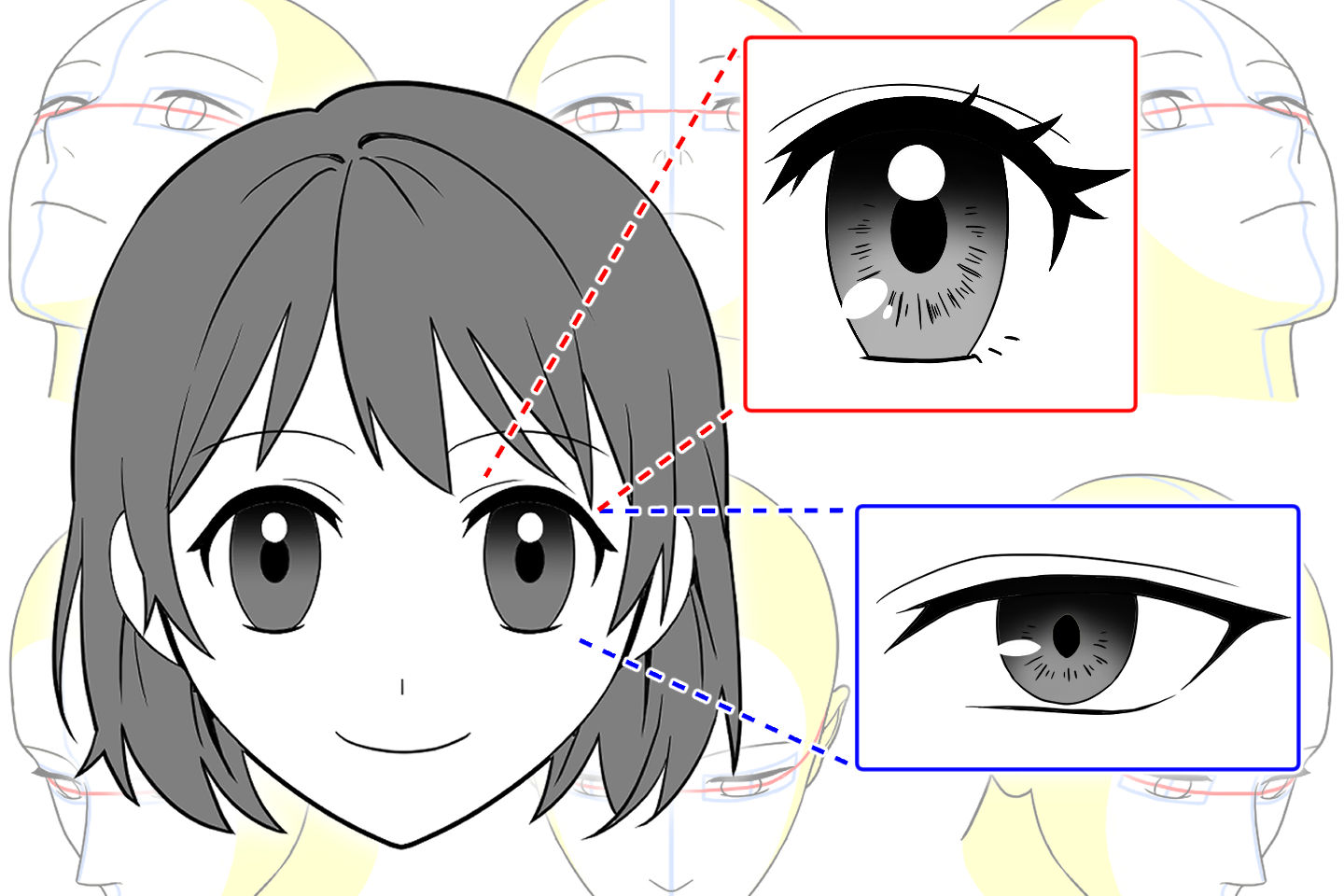
This article was created by the illustrators and manga artists who teach at the illustration and manga school, egaco, based on the knowledge and skills they have honed through commercial production and other work. If you would like to learn more about content that is tailored to what you want to draw, we recommend taking a private lesson at egaco.
- I can’t draw eyes the way I want.
- They end up looking distorted somehow.
- What happens to the shape of the eyes if the angle of the face changes?
Have you ever thought about something like that?
If so, you may not have a good understanding of the shape of eyes.
There are several patterns for the shape of eyes. Also, although the eyes you draw on paper are flat, real eyes are round and have a three-dimensional appearance, and if the angle of the face changes, the way the eyes look three-dimensionally also changes.
Let’s learn the basic shape of the eye and learn how to draw the eyes you want.
What are the basic ways of drawing eyes that you should know?
Let’s learn the shapes of the eyes in terms of proportions.
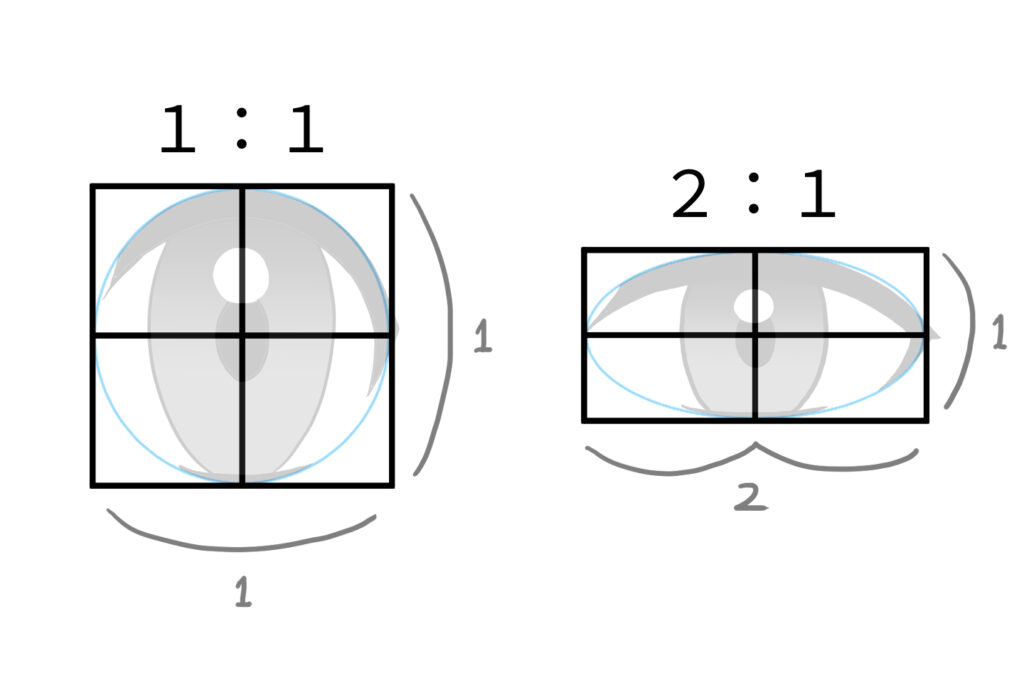
As a basic shape of an eye, let’s learn that large round eyes have a proportion of 1:1 for the same vertical and horizontal length, and normal eyes have a proportion of 2:1.
Following is the order of drawing the eye using the proportions: Let’s try it!
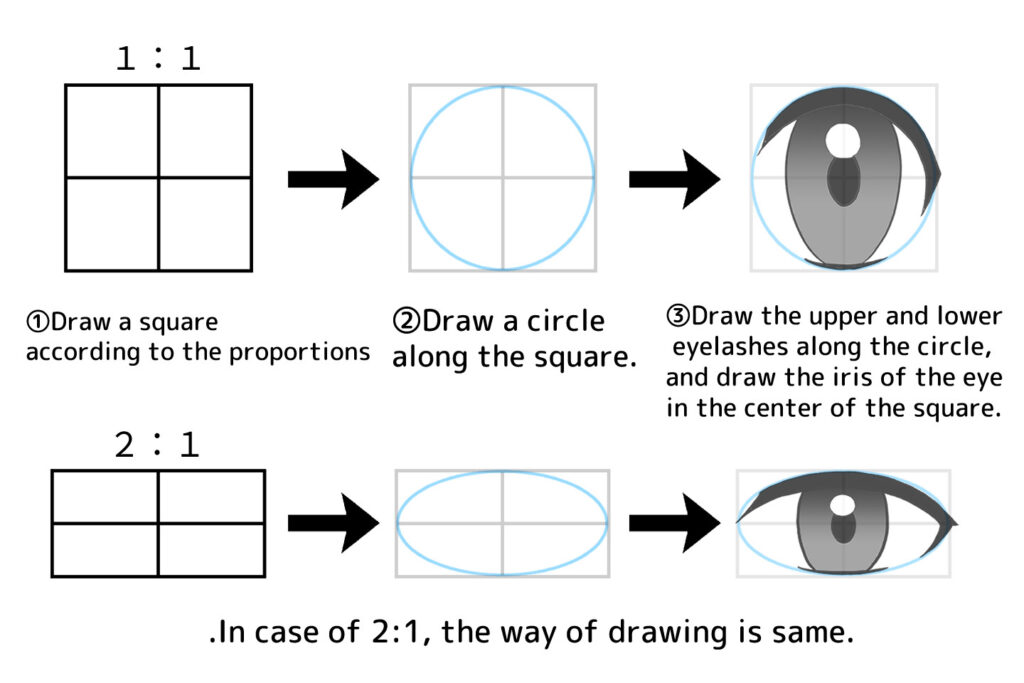
Let’s decide on the balance between the iris and white parts of the eyes
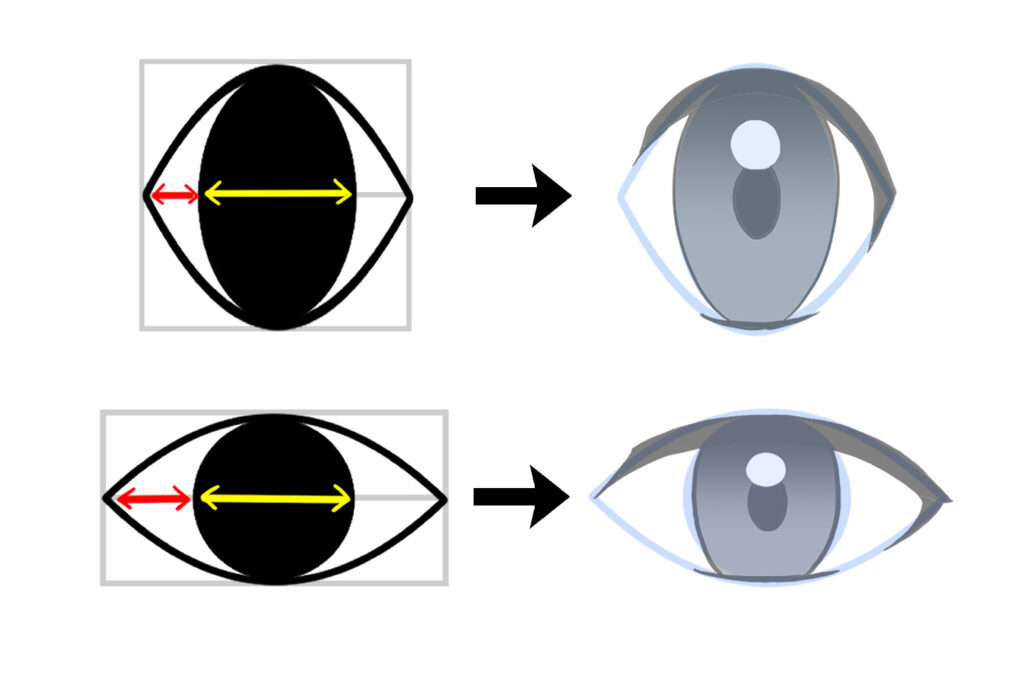
Balance between the iris and white parts
Once you’ve decided on the proportion of the eyes you want to draw, you can then decide on the width of the iris and the white parts of the eyes.
As shown in the diagram, if you make the width of the iris of the eye slightly wider than the white parts, it will give the face a gentle impression.
There are also ways to change the impression of a character by changing the balance between the white parts and the irises of the eyes.
Wrong examples of eyes with irises & white parts of different sizes and shapes
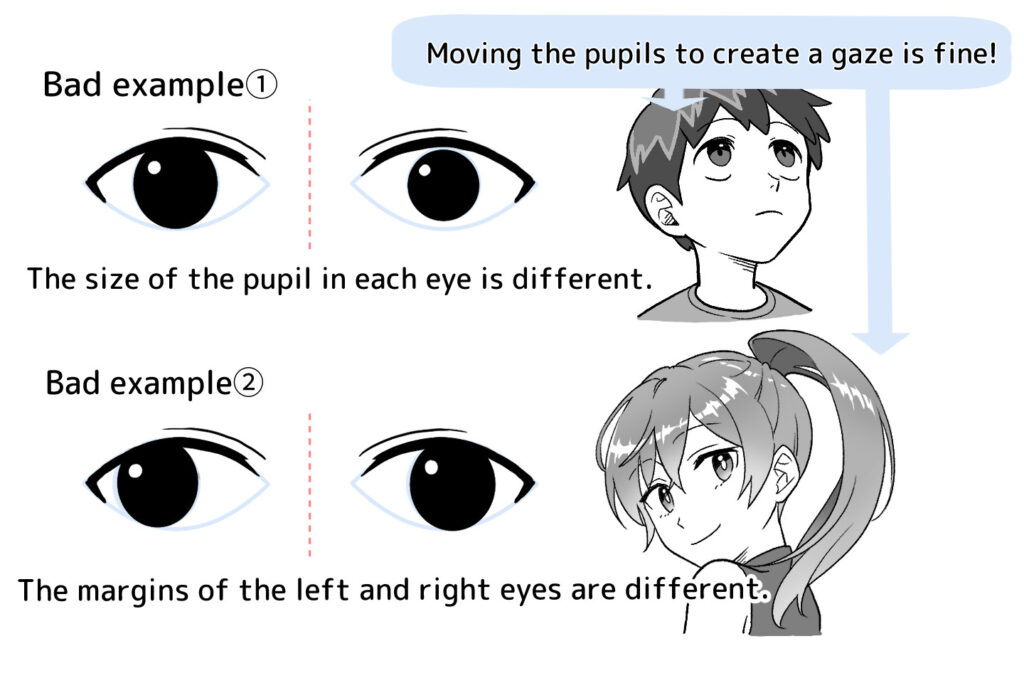
When drawing a face looking straight ahead, be careful not to make the eyes unbalanced by drawing different size of pupils on the left and right sides.
Also, if you don’t draw the white parts of the eyes in the same size on the left and right sides, the eyes will look like they don’t know where to look.
Let’s place the eyes on the face!
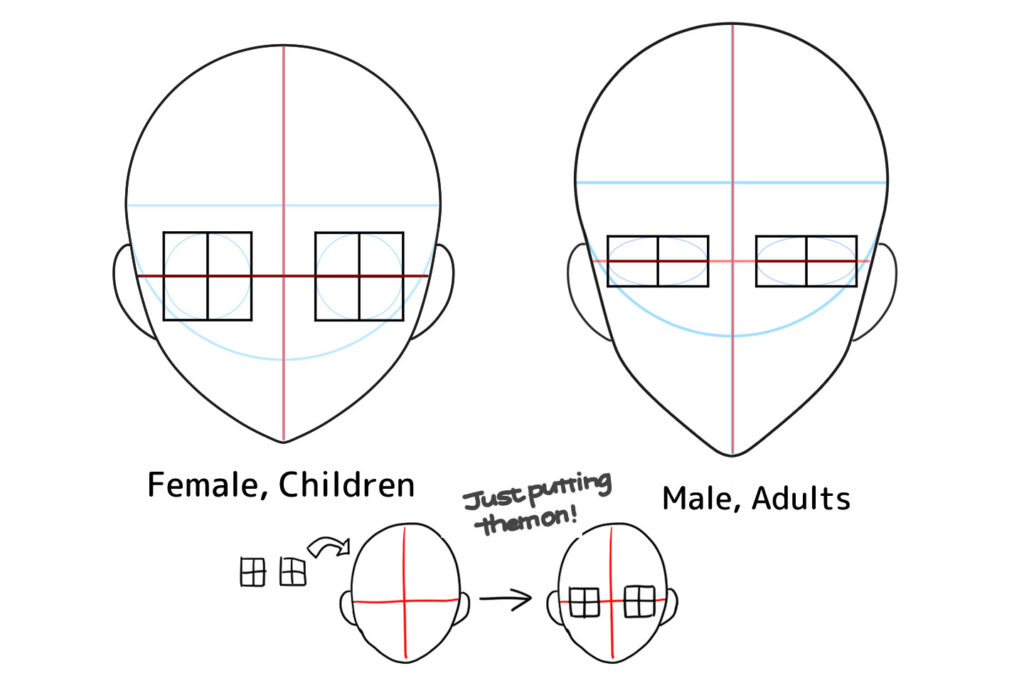
First, draw a tentative picture of the face, and then place a square with the same proportion as the eyes to align with the height of the eyes.
At this point, make sure that the horizontal lines of the cross in a tentative picture of the face and the cross in the square for the eyes overlap, and place the eyes symmetrically on either side of the center line of the face (the red vertical line).
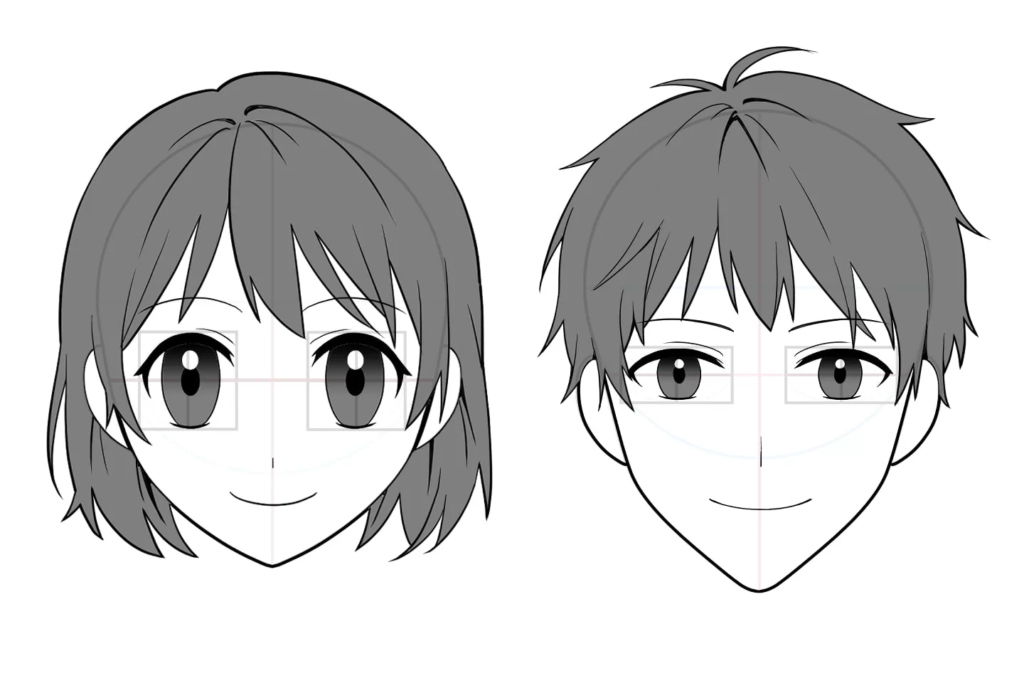
Example of drawing a face from the face outline and along with the tentative picture of eyes
Also, be careful that the eyes are not too close together or too far apart.
Let’s add some variation to the shape of the eyes
Eye proportions and their respective impressions
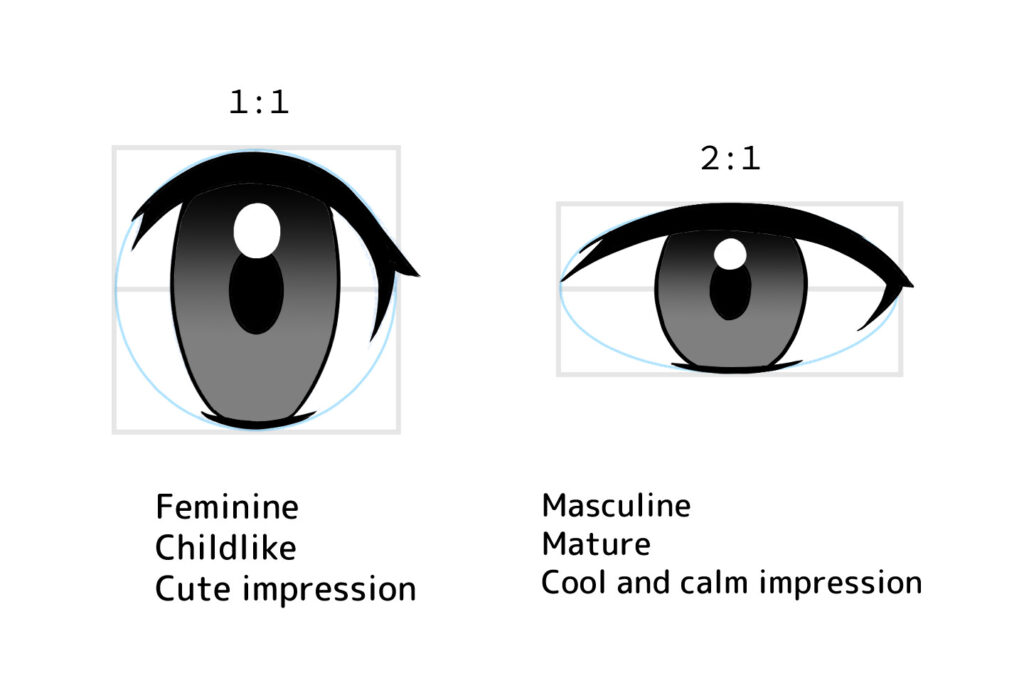
Eyes with a 1:1 proportion have a large, vertically long iris, giving a gentle and cute impression.
Eyes with a 2:1 proportion are closer to the shape of real eyes. Increased proportion of the white parts of the eye creates a mature and cool impression.
Let’s use different proportions of eye shape to match the gender and personality of the character you want to draw.
To change the face impression according to the character
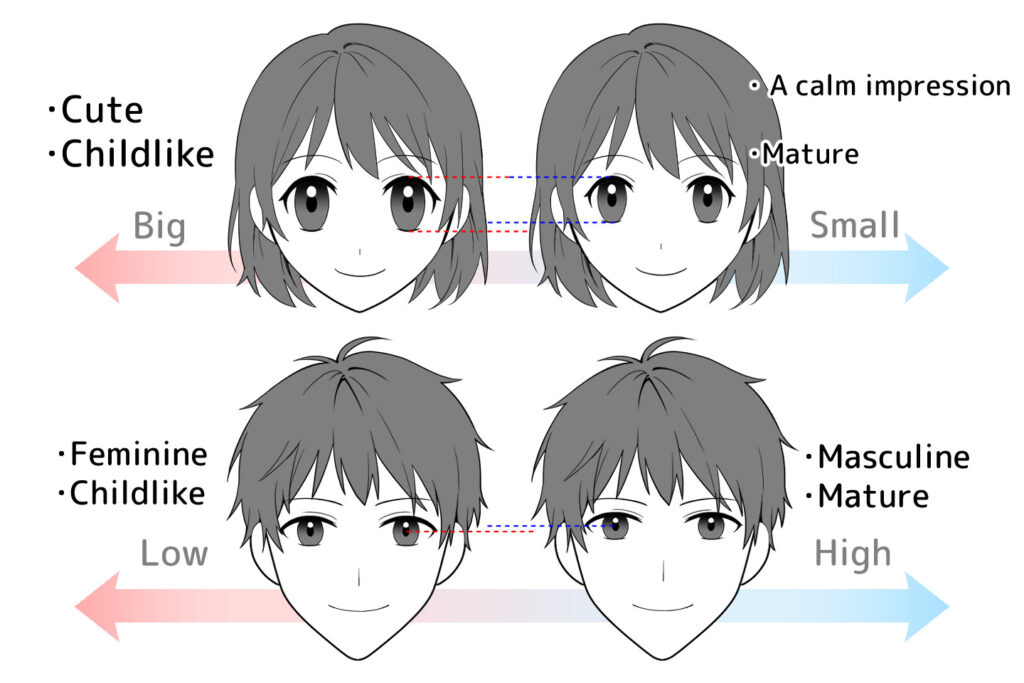
Change the impression of a face by changing the size of eyes and the height of eyes.
To change the impression of a character’s face, you can change not only the proportion of the eye shape, but also
the size of eyes and the position of eyes.
For example, if eyes are big, it will look childlike, and if the eyes are small, it will look like an adult.
Also, if you move the position of eyes slightly down so that they are closer to the nose, it will give a childlike impression, and
if you move the position of eyes higher and the cheeks wider, it will give a mature impression.
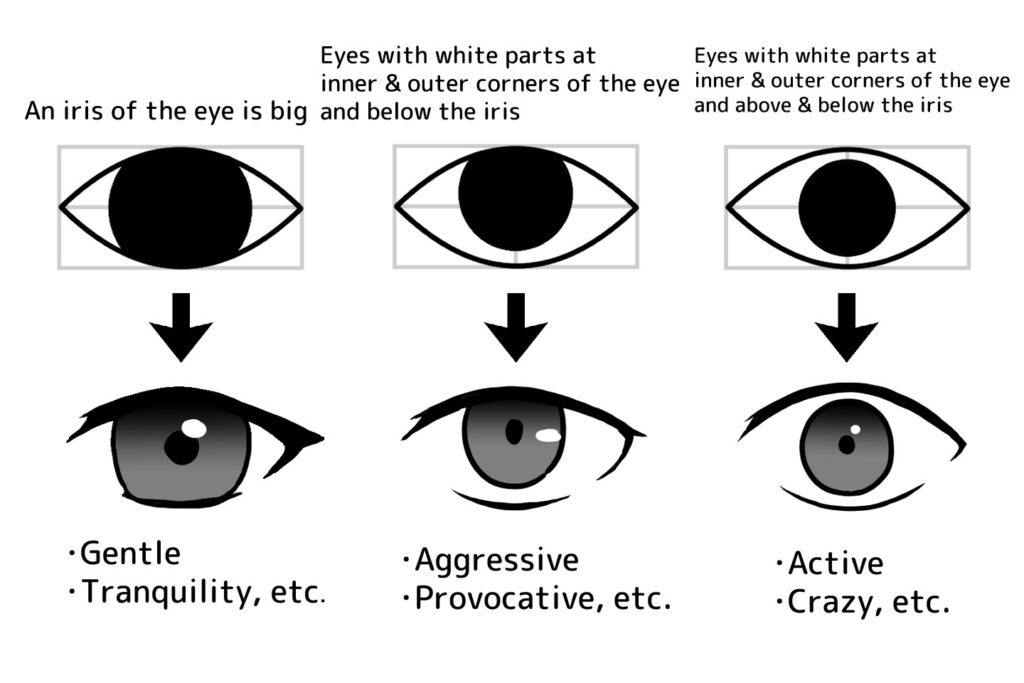
As you can see in the diagram, in addition to the size and height of eyes,
you can also change the width of an iris and white parts of the eye to create various impressions of the character more freely.
“sanpaku-gun” is referred to as the eyes with three-corners of iris surrounded by white parts, and “shihaku-gun” is referred to as the eyes with four-corners of iris surrounded by white parts.
How to draw cute eyes
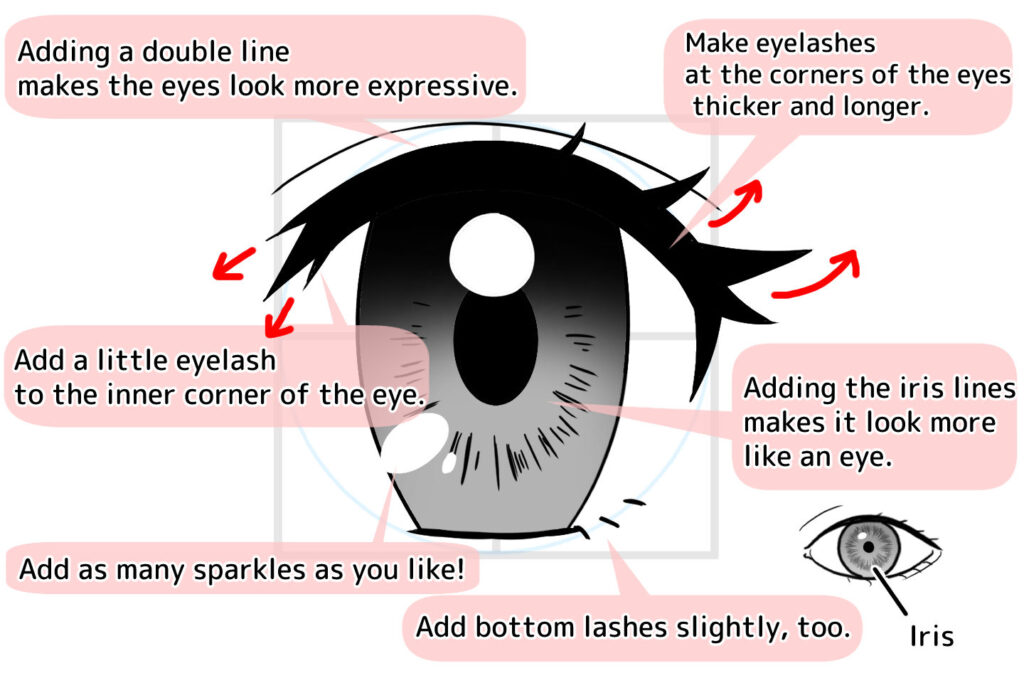
Use a 1:1 proportion for cute eyes.
Make the iris of the eye bigger and draw the eyelashes so that they stand out, and you can draw eyes with a cute impression.
You can draw the eyelashes and highlights as you like! Look at the diagram above, and draw them while keeping the key points in mind!
How to draw cool eyes
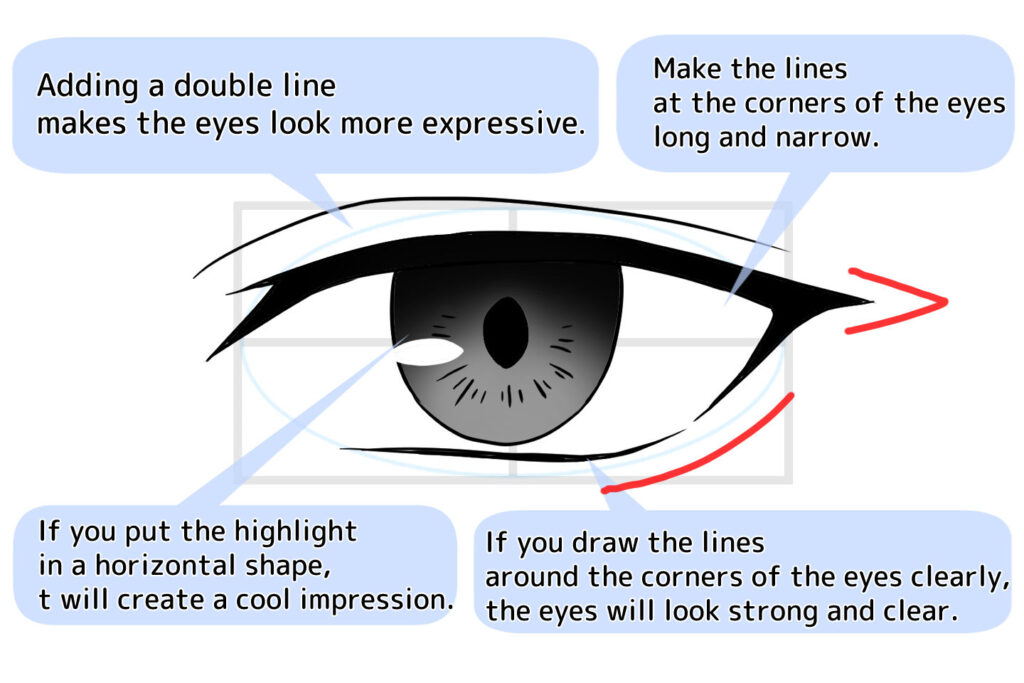
The proportion for cool eyes is 2:1.
When you want to draw cool eyes, making the outer corners of the eyes long and narrow will give them a sharp impression.
At this time, the outer corners of the eyes will be slightly turned upwards.
Also, if you make the highlights a squashed, horizontal shape, it will give the eyes a cooler impression.

The following article explains how to draw eyelashes in detail. Try different expressions to match the mood you want to create!
How to draw eyes with an angle
The shape of eyes when the face is a profile or slanted
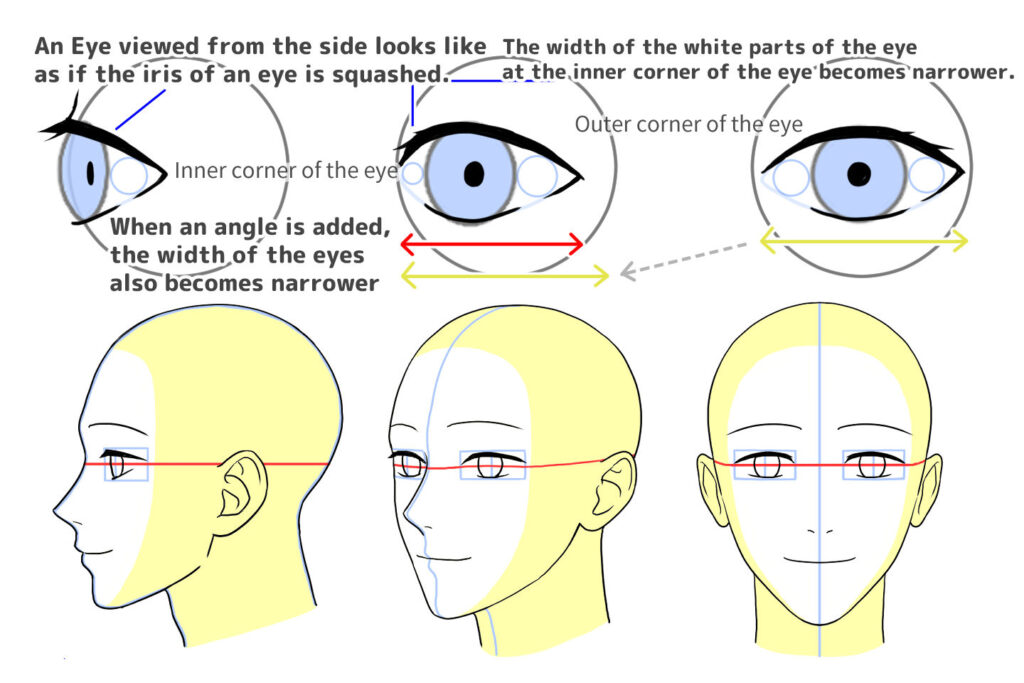
Tips for the shape and positioning of the eyes by angle
As the eyeballs are round, the shape of the eyelids along them is also round
When the angle of the face changes, the width of the eyes, the shape of the iris of the eye, and the width of the white parts of the eye also change on the left and right sides due to the roundness of the eyeball.
As shown in the diagram above, when the face turns sideways, the width of the eyes becomes narrower and the iris of the eye becomes squashed vertically, so the white parts of the eye becomes narrower at the back.
Let’s bear it in mind the lashes are more visible in the eyes that turn sideways.
The shape of the eyes when the face is looked from below or in bird’s-eye view
Same as the eye shapes when the face is sideway-looking or slanted, the shape of the iris or the width of the white part of the eye will of course change;
however, the appearance of the eyelids will also change depending on when viewed them from below, or in bird’s-eye view.
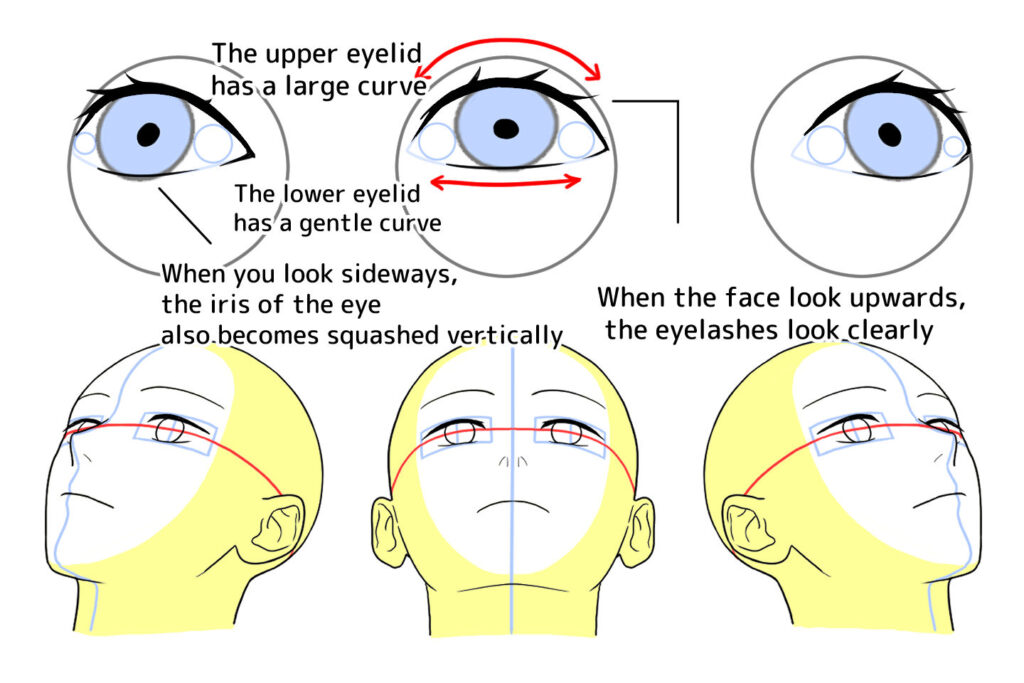
First of all, when the face looks up (upward), the upper eyelid becomes more curved, as shown in the diagram,
and the lower eyelid becomes more gentle and flat.

When you have a bird’s-eye view (looking down), the lower eyelid becomes more curved, whereas
the upper eyelid becomes flatter. When you are looking down, the upper eyelid may become more gently curved.
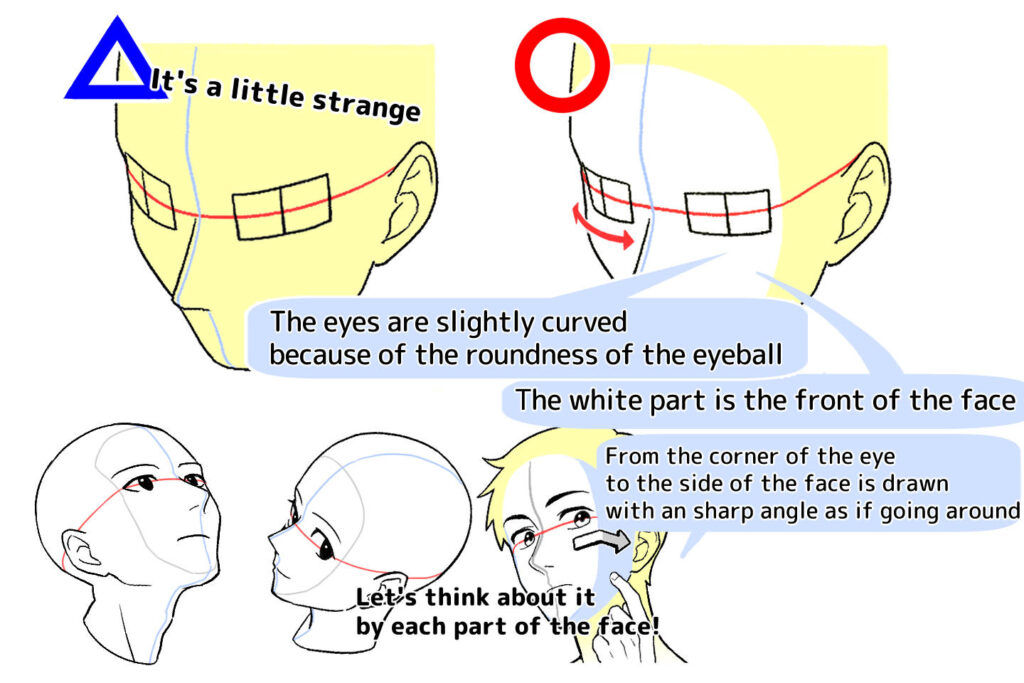
Also, when drawing a face viewed from below or in bird’s-eye view, the line indicating the height of the eyes (the red line in the image)
should be angled when the face is moved from the front to the side because it will make the shape of the eyes more natural.
Conclusion
In order to draw eyes well, it is important to remember the basic shape of the eyes as well as the position of the facial features and the three-dimensionality of the face.
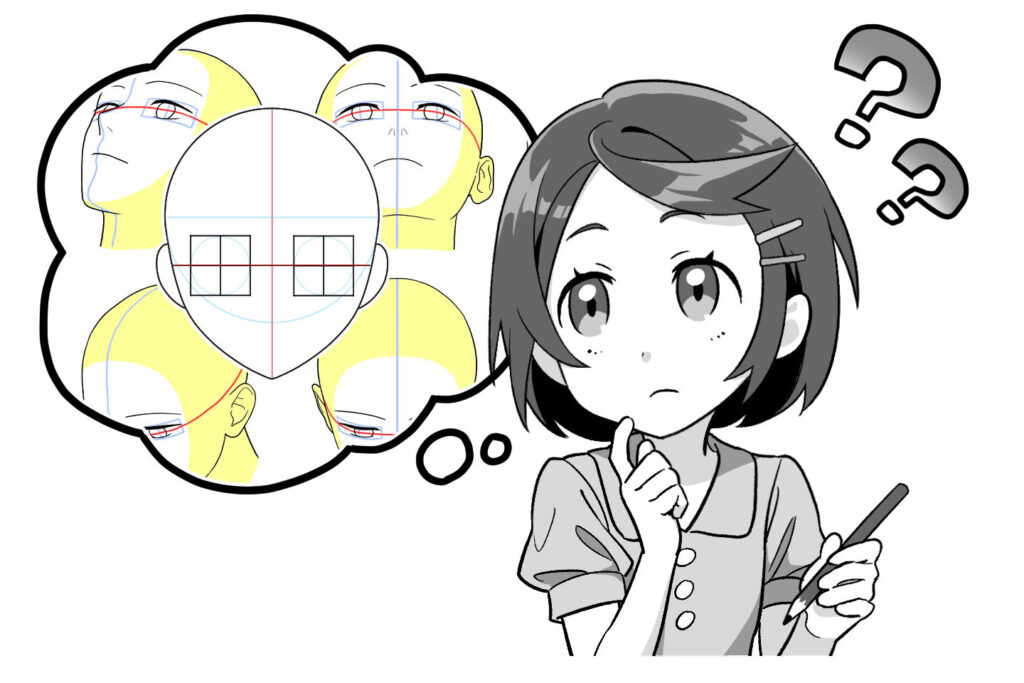
If you have trouble drawing the shape of the eyes, try using proportions, balancing the white part and the iris of the eyes, or observing how the eyes are drawn in pictures you like and trying to copy them.
If you have trouble drawing the shape of the eyes to match the three-dimensionality of the face, try drawing tentative lines on a photo of a face, or practice drawing faces from different angles to remember the shape.
